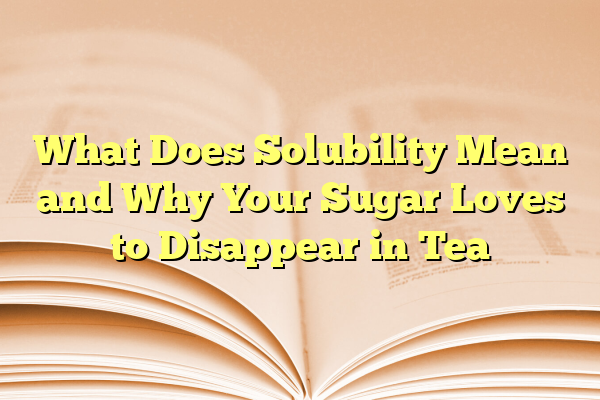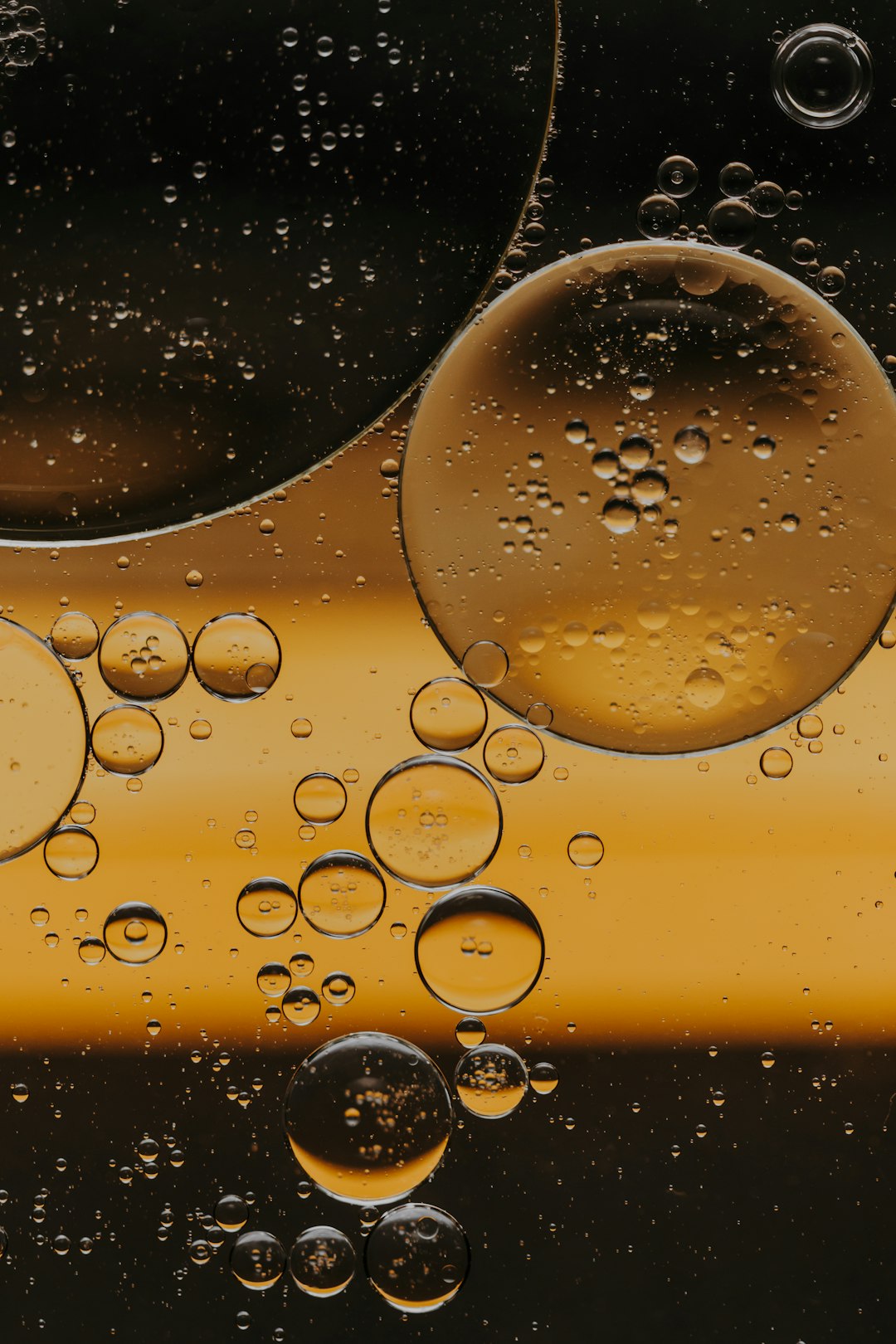
What Does Solubility Mean and Why Your Sugar Loves to Disappear in Tea
Imagine making a nice warm cup of tea. You grab your favorite mug, pour in hot water, and dunk in a teabag. Steam rises. Then comes your favorite part — adding sugar. You stir it around, and just like magic, the sugar disappears. Where did it go? This disappearing trick has everything to do with a science term called solubility.
Contents
- 1 What Is Solubility?
- 2 The Science Behind It
- 3 Does Temperature Matter?
- 4 Why Sugar Disappears (Instead of Floating)
- 5 When There’s Too Much Sugar
- 6 Not All Substances Are This Friendly
- 7 Salt Does It Too
- 8 Does Solubility Only Happen in Liquids?
- 9 Can You Control Solubility?
- 10 Fun Solubility Tricks to Try at Home
- 11 Why Should You Care?
- 12 Wrap-Up: Sugar’s Disappearing Act
What Is Solubility?
Solubility is a fancy word for how well a substance (like sugar) can dissolve in another substance (like water).
When you stir sugar into tea, it seems to vanish. But it’s really just breaking apart into tiny pieces so small that your eyes can’t see them anymore. These tiny bits mix completely with the water to form a sweet liquid.
This happens all around us — from ocean salt to fizzy sodas. Solubility is everywhere!
The Science Behind It
Let’s break it down without making your brain hurt:
- Solute: This is the thing that dissolves. In our example, sugar is the solute.
- Solvent: This is the liquid that does the dissolving. Tea (which is mostly water) is the solvent.
- Solution: The sweet tea you end up with is the result — it’s called a solution!
So — solute + solvent = solution. Easy, right?

Does Temperature Matter?
Oh, absolutely. Temperature is one of the biggest players in the solubility game.
Try this: put sugar in both hot tea and iced tea. Which one dissolves faster?
Hot tea wins, every time. That’s because heat gives water molecules more energy. They move around faster and bump into sugar molecules more often, helping them break down and spread out.
So, the warmer your tea, the easier it is for sugar to disappear. That’s why cold drinks need extra stirring — or sometimes won’t dissolve all the sugar at all!
Why Sugar Disappears (Instead of Floating)
You might wonder: Why doesn’t sugar just sink like a rock or float on top?
Great question! Sugar gets pulled into the water thanks to a little thing called molecular attraction.
The sugar molecules are drawn to the water molecules, almost like they’re best friends. Water surrounds the sugar bit by bit, breaking it down and dragging it into the mix.
That’s also why sugar doesn’t come back out — unless the liquid can’t hold any more. In that case, things get interesting…
When There’s Too Much Sugar
Try to add spoon after spoon of sugar to your tea, and eventually, it stops dissolving. What gives?
You’ve just reached the saturation point. That means the tea can’t hold any more sugar, no matter how hard you stir. The extra stuff just sinks to the bottom like lazy grains saying, “Nope.”
This is super important in candy-making, where the goal is to push liquids past their usual limits to get crystals and cool textures.
Not All Substances Are This Friendly
You’d think everything would dissolve in water like sugar, right?
Wrong! Try putting oil in water. No mix. Why?
Because oil and water are not compatible. Chemists say, “Like dissolves like.”
That means substances that have similar structures mix better. Sugar and water are both polar molecules, making them great teammates. Oil is nonpolar, meaning it just won’t blend in — no matter how much you stir.

Salt Does It Too
Sugar isn’t the only star of the solubility story. Salt is another common example.
Salt dissolves in water the same way sugar does, but faster! Salt particles break into charged pieces — sodium and chloride — that water loves to surround.
This is why oceans have salt in them. Rivers carry salt from land, and all that water slowly concentrates salt in the sea over time. Who knew the oceans were one giant salty tea?
Does Solubility Only Happen in Liquids?
Nope! Although it’s most common in liquids, solubility can happen in gases and even solids.
- Gases can dissolve in liquids — that’s how soda gets its fizz (hello, carbon dioxide!)
- Solids can dissolve in solids — that’s how some metals are blended together to make things like bronze.
So solubility isn’t just for your kitchen. It’s a key player in chemistry, nature, and everyday life!
Can You Control Solubility?
Yes, and here’s how:
- Change the temperature: Hotter usually means more soluble, especially for solids like sugar and salt.
- Stir it up: Stirring pushes solvent and solute together more quickly.
- Crush it: Smaller sugar pieces dissolve faster than big cubes. That’s surface area working its magic!
So you can totally play around with your tea or cooking and become a solubility wizard.
Fun Solubility Tricks to Try at Home
Want to see solubility in action? Try these simple experiments:
- Hot vs. Cold Test: Try dissolving sugar or salt in both hot and cold water. Watch the difference!
- Oil and Water: Put a few drops of oil in a glass of water. Then stir. Notice how they separate again?
- Colorful Candy: Put some hard candy like Skittles in water. Watch the colors dissolve and spread.
These are fun ways to see solubility happen with your own eyes. No lab coat needed!
Why Should You Care?
You might be thinking, “Okay, neat. But why does solubility matter?”
Great question! Here’s why you actually use it every day:
- Cooking: From making syrup to brewing coffee, solubility helps food taste better.
- Cleaning: Soap dissolves dirt and oil in water. Boom — cleaner clothes and hands.
- Health: Vitamins and medicine need water to dissolve and work in your body.
- Environment: Pollutants dissolve in water and air. Understanding solubility helps us clean them up.
So yes — even your bathtub and your breath involve solubility!
Wrap-Up: Sugar’s Disappearing Act
So, the next time you make tea and add sugar, you now know what’s happening.
The sugar isn’t vanishing. It’s just becoming part of the liquid thanks to solubility — a super cool, everyday science trick.

It’s nature, chemistry, and a touch of magic all rolled into one sweet cup. Cheers! 🍵
